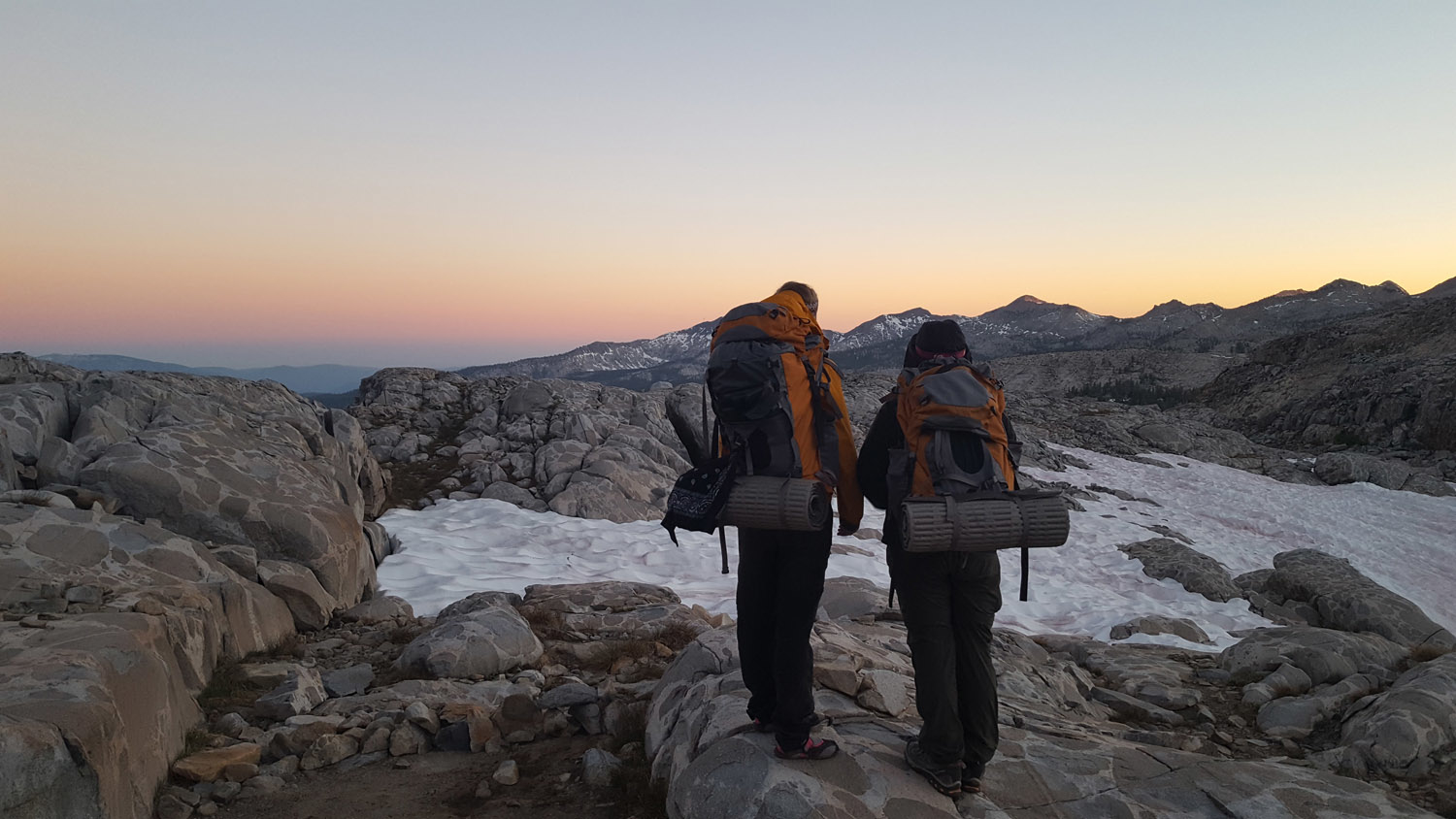[dropcap style=’box’]O[/dropcap]n the morning of day 11, we were eagerly listening to our final breakfast of hash browns sizzle in the fry-bake. Alyssa was the last to join our kitchen circle this morning, “sleeping in” until around 7:30. In the backcountry our sleep schedule is closely related to the rising and setting of the sun. After selecting her rock perch, Alyssa looked to Hannah and me to timidly ask, “I think the mosquitoes are starting to get to my face more. Does it look swollen?” Now, in our Wilderness First Responder courses, we are taught to remain calm so that we don’t spread panic. I think Hannah and I responded adequately with “maybe a little” or “well… not too bad?” It was followed quickly, however, with a shared glance saying what we were both actually thinking: “Uh-oh!” In the end we were happy to find out that Alyssa’s swelling was no match for a healthy dose of essential oils from her kit, and maybe an anti-inflammatory or two.
When thinking of traditional leaders, the charming, well spoken, “has all the answers” type typically jumps to mind. However, when instructing courses at Summit Adventure I don’t expect student leaders to have all of the answers – in fact I expect them not to. Learning how to effectively lead does not require a remarkably dynamic individual, but someone who is able to observe the needs of the group being led. A story from last year’s Adventures in Leadership course will hopefully provide some insight into just how impactful our wilderness leadership experiences can be.
Learning how to effectively lead does not require a remarkably dynamic individual, but someone who is able to observe the needs of the group being led.

Our group for the Adventures in Leadership course of 2018 was unique. We were four in total, including myself. The others included Kenna, a college student from Reno, NV, Alyssa, a high school student from Southern California, and Hannah Glazebrook, then instructor-in-training and now a full time Summit staff member. All three developed tremendously as far as being willing to push themselves out of their comfort zone – kind of our M.O. here at Summit. While it is not our ideal method, the mosquitoes mentioned above were a helpful catalyst in pushing our participants (and instructors) out of their comfort zones and into tighter group unity.
While teaching backcountry navigation skills on courses in general, there are often students who are noticeably more vocal and in the forefront. These students would appear to be leading, and in the style of a dynamic leader. On the 2018 leadership course, none of the students did that. In fact, there was more likely to be a game of ‘Nose Goes’ to decide who would NOT be the leader. Because our small group bonded so quickly, the participants naturally took to group decision making. This building of group cohesion is the leadership style that we find to be more successful and sustainable in all aspects of life, not only in a work setting and certainly not only in a wilderness setting.
This building of group cohesion is the leadership style that we find to be more successful and sustainable in all aspects of life, not only in a work setting and certainly not only in a wilderness setting.

If there was a single moment when our budding group cohesion was manifested, it would be on our hike down the trail from Joe Crane Lake. I use the term trail lightly here, because most would not recognize it as such. This was on day 10 of 12, so our boots were pointed homeward, and the air was thick with the anticipation of showers and cheeseburgers. Fallen trees, oceans of undergrowth and steep cliffs littered our path to civilization. By this time our participants had grown into quite efficient backcountry navigators, and Kenna had the lead. Our frustrations had set our emotions at a simmer all day long, but they finally boiled when Kenna slipped on a wet log and rolled her ankle. Or so one would think. Instead of shattering group morale, this sprained ankle set lines of determination on our participants’ brows. Alyssa offered to help carry some of Kenna’s pack weight. Hannah, as the honorary mom of the group, offered emotional support. Kenna, instead of feeling beaten down, shook it off and burned with renewed energy. And I, aside from taping up an ankle, had worked myself out of a job. Instead of looking to me for all of the answers, the group offered their individual strengths, came together as one unit, and solved problems as they came.
This is a perfect example of the leadership skills we try to develop on our courses. Alyssa was tired and already carrying a heavy pack of her own. But she recognized what she could do in a critical moment to help the whole group succeed, even though she wasn’t designated as the day’s specific leader. We think that some of the most important traits of a leader revolve around group cohesion, because a group that is unified in making a decision will almost always know the needs of the group better than one dynamic individual. As Jesus taught, we believe that leadership is heavily dependent on knowing and loving those around you.
Interested in joining Summit on your own Adventures in Leadership course?


